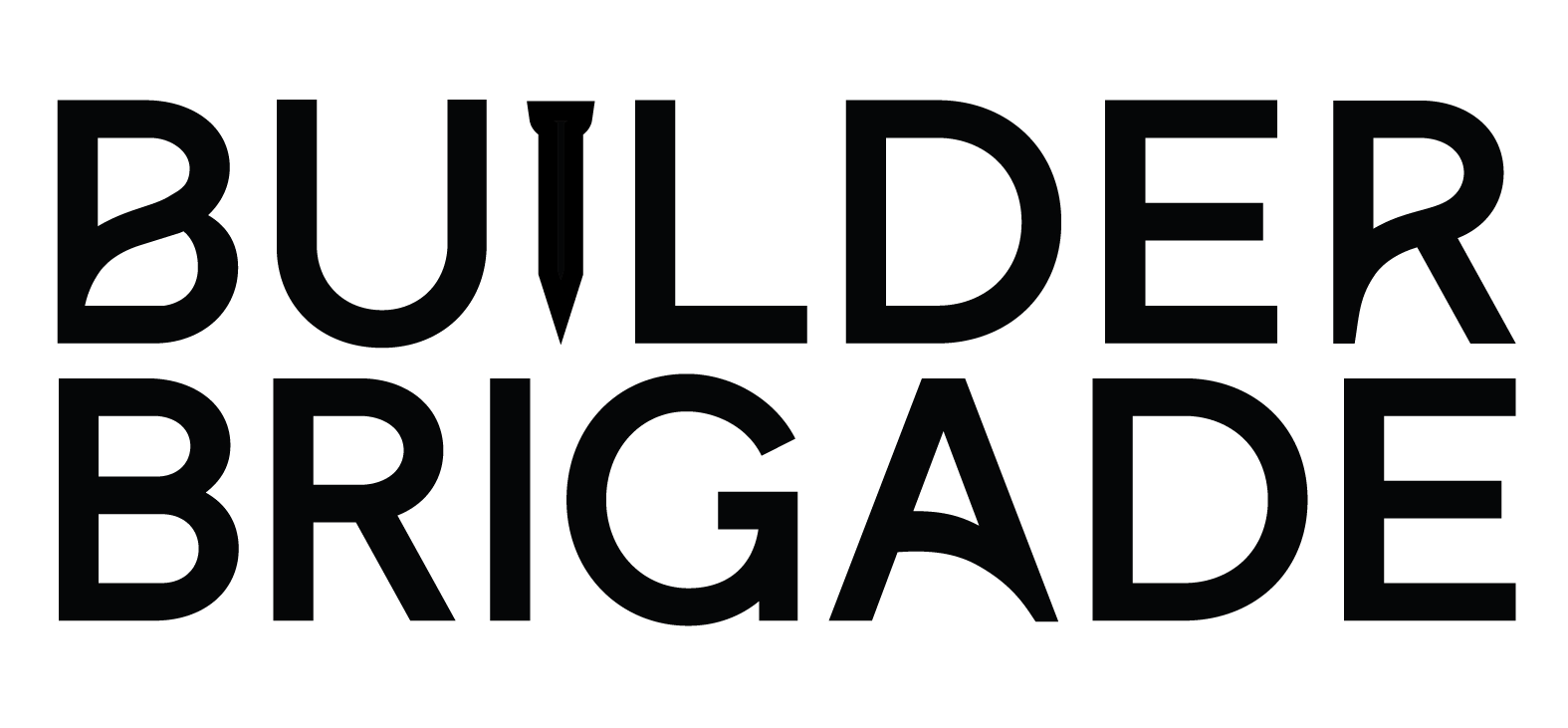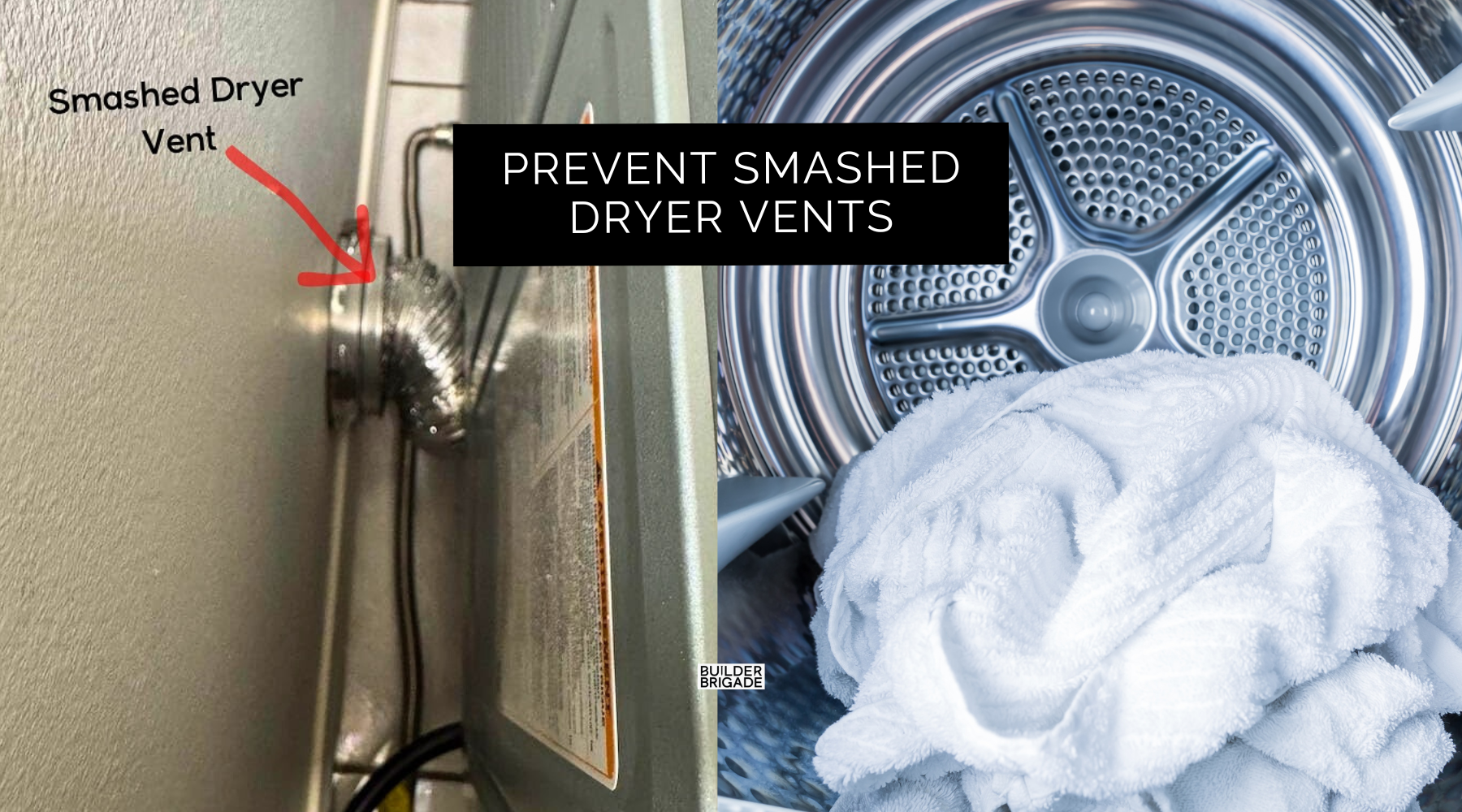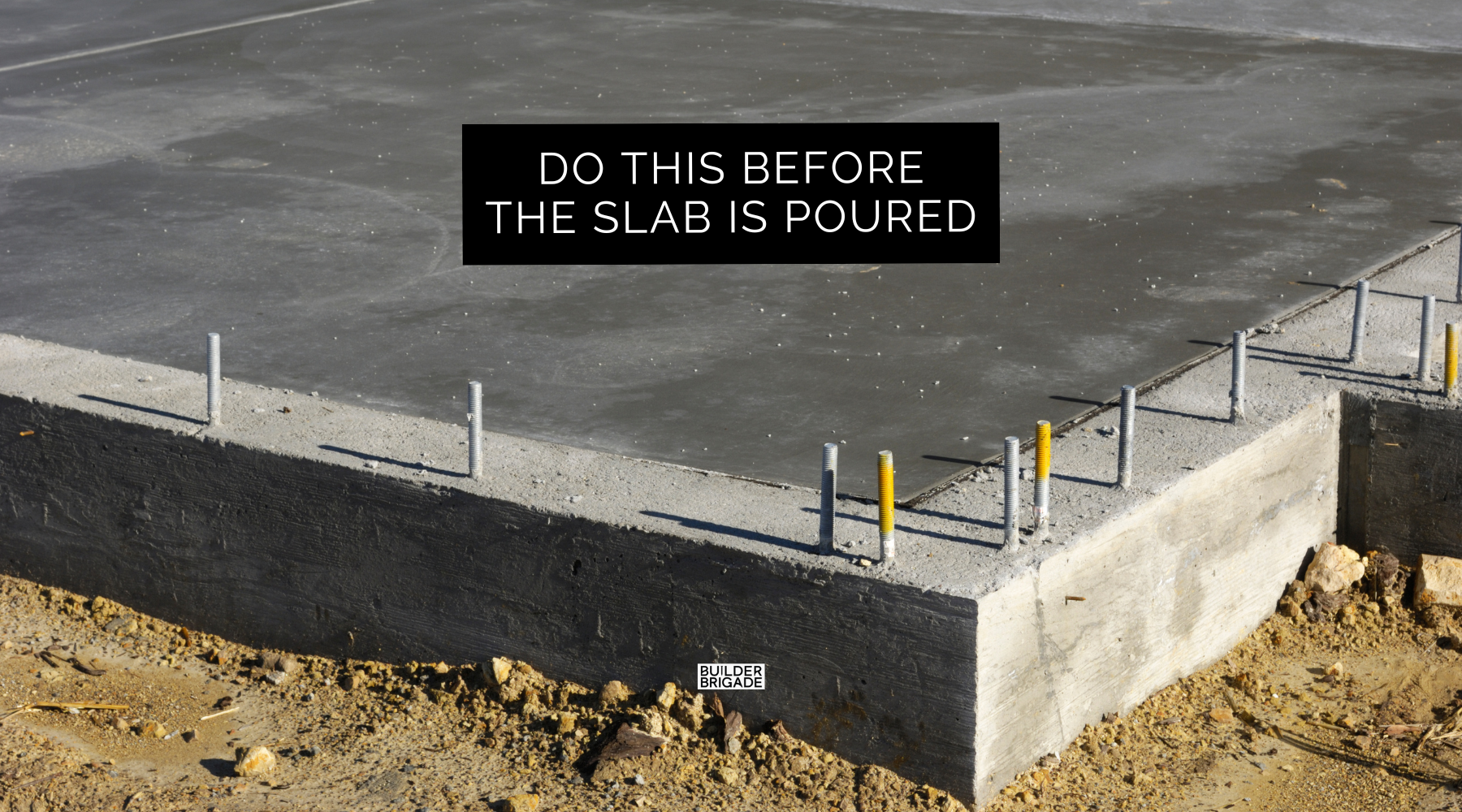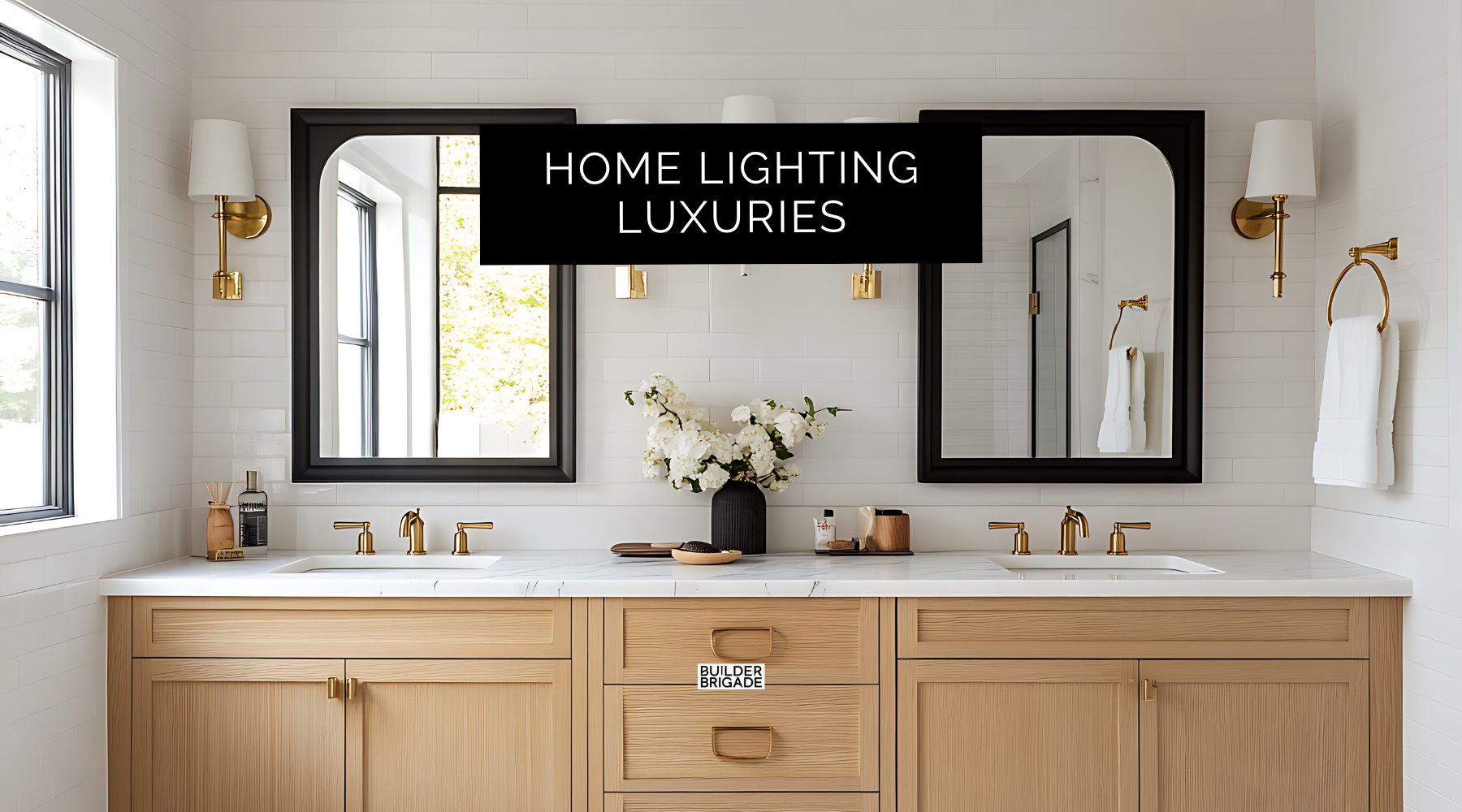If you’re building a new home, you might assume your builder will automatically install your dryer vent in a way that maximizes airflow and efficiency. But unless you plan for it, you could end up with a smashed vent that leads to longer drying times, higher energy bills, and even a fire hazard!

Why Dryer Vent Placement Actually Matters
A dryer works by pushing hot, moist air out through the vent. If that vent gets crushed behind the dryer, airflow is restricted. This means your dryer has to work harder, clothes take longer to dry, and lint starts building up in the vent, increasing the risk of overheating.
If you’ve ever had a dryer that takes forever to dry a single load, there’s a good chance a crushed vent was the culprit. This is completely avoidable if you plan for it during construction.
The Best Dryer Vent Setups for a New Build
The easiest way to prevent a smashed vent is to choose the right setup from the start.
A recessed dryer vent box is one of the best solutions. Instead of your vent hose sticking straight out of the wall (where it gets squished the second you push your dryer back), a recessed vent box is built into the wall itself. This gives the hose room to connect properly without being crushed, so you get full airflow and better dryer performance. Plus, it lets you position your dryer closer to the wall, which means more space in your laundry room.


If cutting into the wall isn’t an option or your house is already built, a magnetic dryer vent is another option. This setup uses a strong magnetic connection instead of clamps, so the hose stays secure while still having some flexibility. If the dryer gets moved, the vent just adjusts with it—no crushed ducts, no airflow restrictions, no headaches.
Shop the dryer vents on Amazon here: https://geni.us/LaundryLink_A

Plan Your Vent Route Early
Even the best vent setup won’t work if the vent has to twist and turn just to reach the outside. A short, straight vent path is always best. The more bends and turns in the duct, the harder it is for air to escape, which can cause lint buildup and slower drying times. If you can, plan for your laundry room to share an exterior wall so the vent has the shortest possible route to the outside.
Avoiding Dryer Vent Problems Before They Happen
Your builder isn’t a mind reader. If you don’t specifically ask for a recessed vent box or mention that you want a rigid duct, they’ll likely default to whatever is standard.
Planning ahead is key! If you want to make sure nothing gets overlooked, grab The Ultimate Home Building Checklist to stay on top of every decision before it becomes a problem.







